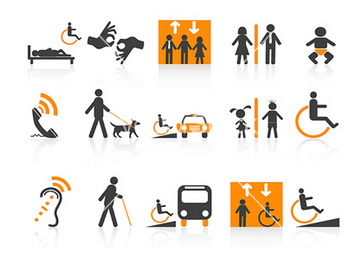 Author: Dragana Malidžan Vinkić (Social Inclusion Blog)
Author: Dragana Malidžan Vinkić (Social Inclusion Blog)
As the school year end nears, it is important for teachers to get introduced to methods of adapting the conditions for drafting the final exam test (FE) and the contents of the test for students with certain difficulties, or those educated according to an IEP. As far as I had the opportunity to talk to colleagues from other schools, there are many doubts over what can be adjusted and how to adjust the FE. (…)
When working with a student learning according to an IEP, within our subject we are obliged to produce adapted achievement standards. Teachers often ask me how much they need to “lower” their standards. In fact, this is not about “lowering and raising” the standards at all, but about adaptation. We need to start from a known framework, this being the existing standards, most frequently the basic ones, but it depends from student to student. They are used to compare the achievements of the child at the start of every school year, because not all standards correspond to every grade.
It is best to show them in a table, since this gives the clearest view, easiest to change in accordance with the changes of the student. A table should be made with three columns, the first with the existing educational standards (basic level), the second how much and what the student meets, and this will also become the student’s adapted standards, based on what they know at the moment, and the third being what they do not meet and what they could learn in a certain time. In fact, the third column would represent adapted achievements for the end of a given grade/education level. Lectures, tasks, tests, exams, as well as the FE test are prepared based on the standards achieved.
The presented table is a good framework in the selection of problems for the test, but also a useful document of the student’s portfolio on the specific knowledge of the student that should be forwarded to the future school. The individual educational plan and standards are the framework for drafting the problems. For those still feeling insecure in drafting the problems, a reliable version is to adapt problems from the existing collections for the final exam in accordance with the IEP.
Here are examples of problems from a test adapted for a student with autism. The test contains problems based on adapted standards and the IEP, but are in accordance with the student’s interests (TV, favourite TV channels, comics, funny stories, history) in order to retain the student’s attention and make the atmosphere more fun and relaxing during the final exam. In addition to the test, there was also the assistant – school psychologists, registered earlier, known to the student and charged with returning him to the problem after a drop in concentration or the need for a walk.
I found the sources for the test online. The test was easy to create once I had a precise record of how much and what the student knows (the table). From the pedagogical profile of the student’s interests (television, entertainment…) and the type of additional support during the final exam (assistant indicating the problems). Based on the worksheets collected, the problems, and notebooks, I had a small collection of problems and types of problems the student can solve.
The teacher does not need to be creative and imaginative to adapt the education to the student. It is important to keep records on the student, collect materials from the fifth grade onward, change when things are not moving ahead, learn from mistakes and ask for the assistance or suggestions of colleagues.
The text in its entirety can be found on the Social Inclusion Blog.
 Government of the Republic of Serbia
Government of the Republic of Serbia















 pdf [271 KB]
pdf [271 KB]
Leave a Comment